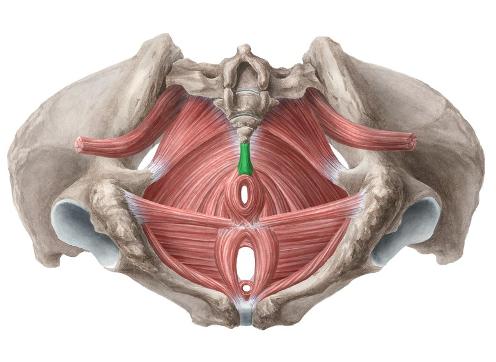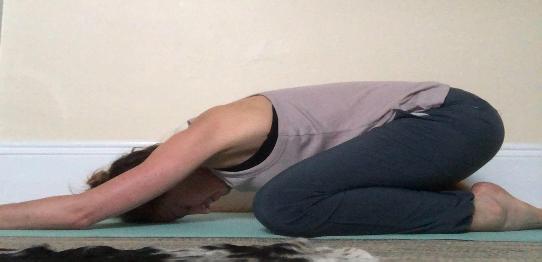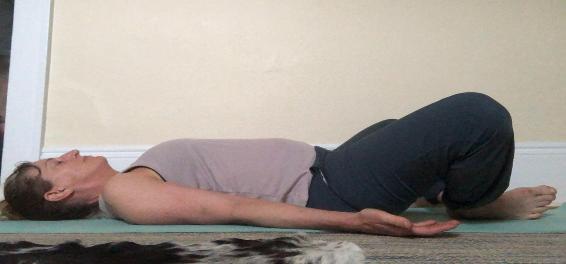
4 minute read
Women's Health


Advertisement


TO KEGEL OR NOT TO KEGEL
that is a very important question
Dr. Elaine Mele PT, PYT, FNCP Physical Therapist Yoga Therapist Functional Nutrition Provider
How many of you have been told or have heard that all women should do Kegels to keep their pelvic floor strong? Have you also been told the proper way to do a kegel is to try stopping your urine flow? Well like everything else, blanket statements just do not work. I am here to break it down and give you the real low down so you can make informed decisions.
In my previous article, last month, I talked about how the pelvic floor functions in relation to urinary incontinence and how your pelvic floor can be weak, tight, or a combination of both. In this article, I will dive a little deeper into what signs and symptoms may present with each one and describe some exercises you can do to keep your pelvic floor healthy.
Signs and Symptoms of Pelvic Floor Dysfunction:
Hypertonic or “tight” or non-relaxing pelvic floor -General pain in the pelvis -Low back pain -Hip pain -Pain with intercourse (Dyspareunia) -Pain with tampon insertion or gynecologic exam (Vaginismus) -Urinary dysfunction: increased urge, increased need to strain to start urine flow -Constipation
Hypotonic or “weak” pelvic floor -Low back pain -Hip pain -Urinary incontinence: leakage with laughing, coughing, jumping, inability to hold urine after feeling the urge to go. -Pelvic Organ Prolapse (POP): the feeling, sensation, or occurrence of your pelvic organs (uterus, rectum) descending out of your body -Decreased sensation during sex
If you have any of these symptoms, not to worry, there are effective treatments for these conditions. The first step is to see a medical professional and obtain a referral for a pelvic floor specialist. The most accurate way to assess whether a pelvic floor is hyper or hypotonic is by an internal evaluation. However, a thorough history and intake by an experienced professional can also point you in the right direction.
The Kegel exercise was originated by Dr Anthony Kegel, a gynecologist in the early to mid 20th century. He was able to demonstrate that the pelvic floor could actually be strengthened with repeated exercise (via held contractions) thereby assisting with urinary incontinence and pelvic organ prolapse. Thank you, Dr. Kegel! However, as we are learning today this is not the whole picture. Below I will discuss how to do a proper pelvic floor contraction along with ways to perform pelvic floor relaxation. These instructions do not substitute for proper evaluation and treatment by a trained professional.
How to do a Proper Pelvic Floor Contraction:
Find a comfortable position either sitting or lying down. Begin with visualizing the breadth of the pelvic floor as it expands (very basically) from your pubic bone to your tailbone and between both sitting bones (see picture below)
Next, take a few full but relaxed breaths imagining your entire pelvic floor dropping or expanding on the inhale and lifting up and in on the exhale. Once you get the sensation or idea of the contract / relax coordination with the exhale/inhale, start to focus on just the exhale (contraction) part. Some cues that are helpful with this engagement include:

* imaging an elevator rising up a few floors as you exhale * try and stop both your urine and passing gas at the same time * Imagine you are sitting on a blueberry that is positioned right between * your anus and your vagina. Now try to suck that blueberry up and in.
WARNING: You will never look at blueberries the same again!
www.elainemele.com elaine@elainemele.com
Once you feel comfortable with the sensation of contracting your pelvic floor, see if you can hold that contraction for 3-5 seconds at a time. Try not to engage or squeeze other muscles in the area such as the ones in your backside or inner thighs. It is very important that you relax completely between contractions (which we will learn about in the next section) so as not to prevent a situation where you are reinforcing tightness and hypertonicity.
Return to the relaxed breathing pattern described above this time focusing on the inhale and the sensation of your pelvic floor dropping, widening, or broadening. Do this in a way that you are not pushing or bearing down. It is more of a visualization technique than an actual forced effort.
Various positions can help with pelvic floor relaxation and they include:
How to Relax the Pelvic Floor:
Child’s Pose:

Supta Baddha Konasana:

www.elainemele.com elaine@elainemele.com
Happy Baby:

If you are confused or having difficulty with these exercises you are not alone. This is not like exercising your bicep or arm muscles where you can see the action in real-time. Pelvic floor work takes a lot of guided practice and the development of internal awareness (or interoception) which is actually a very useful tool to develop for it can help with chronic pain, anxiety, and emotional attunement (more on that another time!).
If you have any of the symptoms listed above, and/or you are having difficulty performing pelvic floor exercises you may need to see a healthcare provider that specializes in Women's Health. You can also reach out to me at elaine@elainemele.com for a free 20-minute consultation to discuss your needs.
Dr. Elaine Mele
www.elainemele.com elaine@elainemele.com











